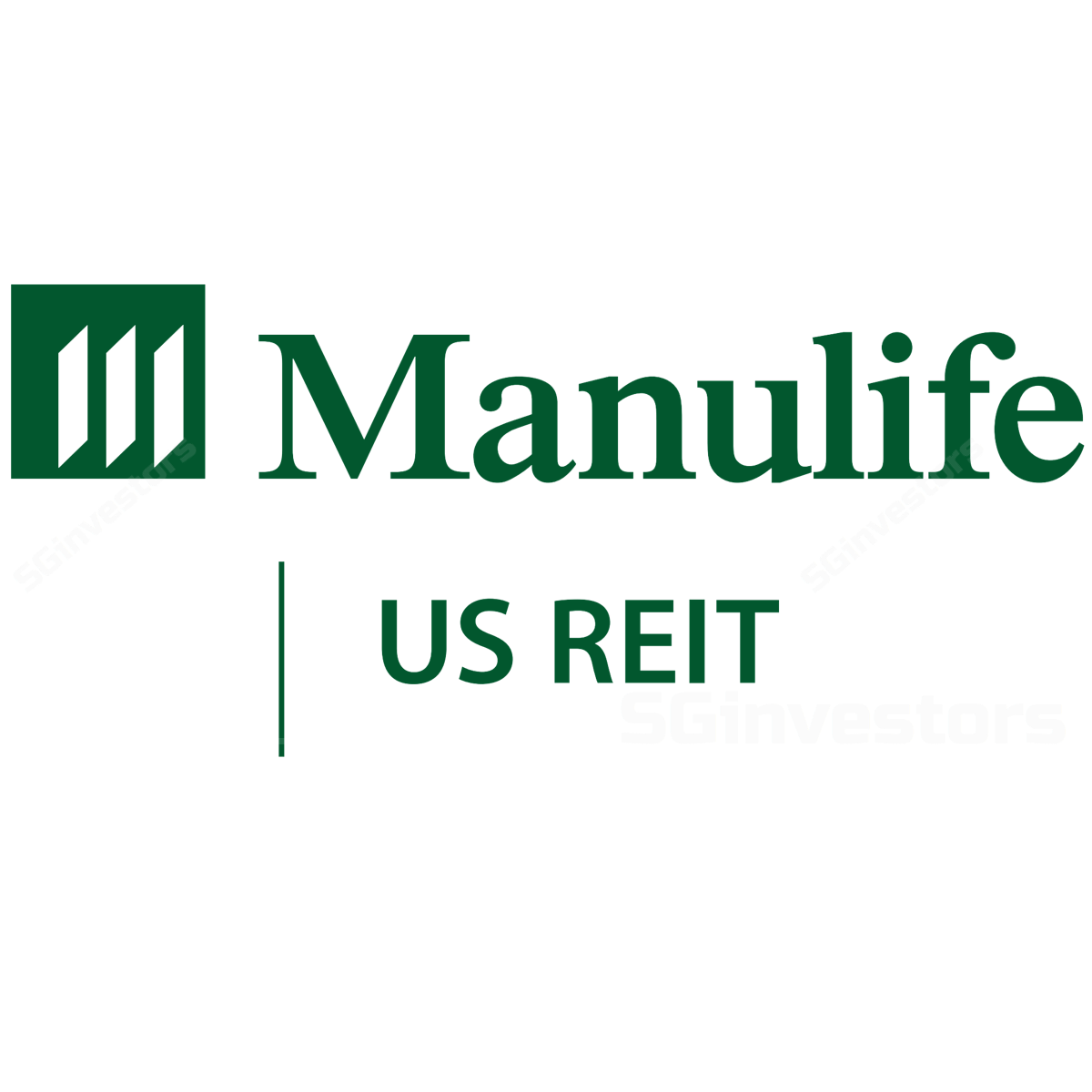 MANULIFE US REIT (SGX:BTOU)
MANULIFE US REIT (SGX:BTOU)
Manulife US REIT - 3Q18: Economy On Sugar Rush
- Results came in above expectations. Manulife US REIT saw positive rental reversion of 13.5%, due to eight new/renewed leases (1.9% of portfolio NLA).
- US GDP surged 3.5% in 3Q18, brushing off Trump’s trade war concerns. Class A inventories at the submarket level also saw tighter vacancies across the board (except for Hudson Waterfront), led by a flight to quality among tenants.
- Maintain BUY with a higher target price of S$1.07.
3Q18 RESULTS
Results above expectations.
- Manulife US REIT (MUST) reported a 3Q18 adjusted DPU of 1.52 S cents, bringing 9M18 adjusted DPU to 4.53 S cents. 3Q18 gross revenue and NPI were both up 75.3% and 74.9% y-o-y, due to contributions from the four newly-acquired Trophy and Class A quality offices in 2017 (Plaza and Exchange) and 2018 (Penn and Phipps).
- Results came in above our expectations, with 9M18 adjusted DPU forming 80% of our full-year forecast.
STOCK IMPACT
Positive rental reversions of +13.5% in 3Q18.
- In 3Q18, eight new/renewed leases (ie amounting to ~69,000sf, or 1.9% of the portfolio NLA) were signed. Some 56% of the portfolio leases (weighted by NLA) have rental escalation in place.
- Another 39% are on mid-term or periodic increases. The remaining 5% do not have such escalations, but they comprise of highly defensive tenants (ie 85% are government leases).
Portfolio occupancy grew marginally to 96.5% (+0.5ppt qoq),
- due to occupancy increases at four of their properties (Figueroa, Michelson, Peachtree and Phipps). Among the properties, Penn and Phipps reached full occupancies.
- The overall occupancy of 96.5% also compares favourably to the 87-88% average levels across the US.
Appetitie for more acqusitions at the appropriate time.
- Gearing remained stable at 37.4% (+0.1ppt q-o-q). Weighted average debt maturity is 3.0 years, which is well spread out. Additionally, 100% of the debts are financed on fixed rate loans, which will help to mitigate the impact from near-term rate hikes.
- Fed funds rates are expected to rise once more in 2018, and three times in 2019, although the pace of the rises could be tempered by the impact of trade policy on growth, or a flattening yield curve. On our estimates, Manulife US REIT has an acquisition headroom of US$253m (assuming maximum gearing of 45%).
- On acquisition financing, management noted their preference of using perpetuities to take on non-DPU accretive deals, due to their lower-cost (vs equity). However, they signaled that conditions in the perpetuities market are quite different currently. Management noted that they are bidding their time, as they find more yield-accretive deals from time-to-time.
Diversified tenant base, with efforts to reduce exposure to legal tenants.
- The percentage of leases expiring in 2019 has increased to 10% by gross rental income (vs 7.9% in 2Q18). Management has attributed that mainly to their renegotiation with law tenants to right-size their spaces, and overall reduction in portfolio exposure to law firms.
- Manulife US REIT has already been actively marketing these spaces in the buildings, and expects minimal downtime from the transition of leases.
AEI works on Figueroa (US$8m) and Exchange (US$12m).
- Manulife US REIT has commenced works for Figueroa, which includes refreshing the lobby, installation of new gantries and seating areas, modernising the exterior entrance and addition of a new cafe.
- For Exchange, works will include new flooring, a security desk, glass features, LED lighting, as well as works on the exterior and interior of the building.
- Management noted that the AEIs are more of a defensive capex (ie to maintain value in their product), and are scheduled to complete in 2019.
Buoyant US economic outlook.
- The US economy grew 3.5% during the quarter, due to higher consumer spending, non-residential fixed investment and government spending. Unemployment rate also fell to 3.7% (-0.3ppt q-o-q), among the lowest in about 50 years.
- Impact on GDP by the ensuing trading war has also been limited to date. However, sector specific risks are increasing, which may be reflected in more modest business investments going forward.
Positive US office outlook, led by Class A properties.
- According to data by JLL, the US saw office absorption of 7.9m sf (vs 7.6m sf in 2Q18) and vacancy of 15.2% (+0.3% q-o-q). Class A properties led in terms of net absorption at the expense of Class B and C, driven by tenants’ flight to quality (due to the growing number of availabilities in new supply) and competition for talent.
- Across the seven submarkets Manulife US REIT has a presence in (except Hudson Waterfront), we also saw tighter occupancies (vs 2Q18) among Class A office inventory based on data released by CoStar.
- Although US office rents increased by 2.8% in the last 12 months, concession packages continue to increase due to greater competition between landlords. Management alluded that there was some pressure to give concessions across submarkets they have a presence in. Washington DC was flagged as one of the more affected markets, but Manulife US REIT’s building, Penn, was not as affected given that it has been 100% leased.
EARNINGS REVISION/RISK
Earnings forecasts raised for 2018-20.
- We raised our 2018-20 DPU forecasts by 1-5%, mainly factoring in higher rental reversions across US office properties (ie as a result of tighter occupancies for Class A inventories at the submarket level).
- Our 2019-20F DPU growth assumptions are moderated, in line with global growth outlook by UOB Global Economics & Markets Research.
VALUATION/RECOMMENDATION
- Maintain BUY with a higher target price of S$1.07 (previously: S$1.06).
- Our valuation is based on DDM (required rate of return: 8.0%, terminal growth: 2.5%).
Peihao Loke
UOB Kay Hian Research
|
Andrew Chow CFA
UOB Kay Hian
|
https://research.uobkayhian.com/
2018-11-07
SGX Stock
Analyst Report
1.07
UP
1.060

